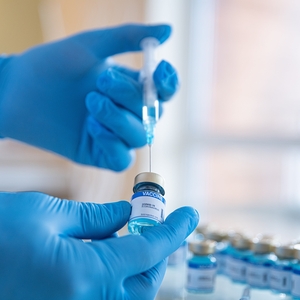Cybersecurity Check-Up: Always A Good Time To Prepare to Protect
ABSTRACT: While Cybersecurity Awareness Month is not for a few more months, there is no time like the present to brush up on some of the risks, vulnerabilities, and strategies for preventing intrusions in medical devices.
Summertime can be full of opportunities to relax and recharge. However, it can also be a time where cyber outages, risks, and vulnerabilities can be at their highest while guards are down, particularly around the holidays. While not a cybersecurity attack, Crowdstrike recently felt the strain of a cyber outage affecting multiple industries, sending a good reminder that our cyberspace is not infallible and requires regular attention and preparation to prepare and protect from malicious actors.
While Cybersecurity Awareness Month is not until October, there is no time like the present to brush up on some of the risks, vulnerabilities, and strategies for preventing intrusions in medical devices. In recent years, the FDA has been busy issuing recommendations for addressing and/or otherwise preparing for cybersecurity risks. A summary of their steady flow of actions can be found here. We’ve also blogged on cybersecurity risks here, here, and here.
In March of 2024, the FDA issued a draft guidance, Select Updates for the Premarket Cybersecurity Guidance: Section 524B of the FD&C Act, that proposed updated cybersecurity recommendations to the industry, as well as recommendations for documentation in device premarket submissions. In the guidance, the recommendations focus on addressing cybersecurity in the premarket context where manufacturers must demonstrate a reasonable assurance of safety and effectiveness on devices that contain cybersecurity risks. This requires software validation and various risk management practices. When final, the guidance will supersede “Cybersecurity in Medical Devices: Quality System Considerations and Content of Premarket Submissions,” issued September 27, 2023.
As previously reported, medical devices are vulnerable to attacks on a myriad of fronts. A common area of vulnerability involves unauthorized third parties or hackers obtaining information that may allow them to compromise a medical device via public information provided by certification agencies, device manuals and patent databases. A second vulnerability is that not all operating systems are compatible with one another, which leads to misconfiguration and vulnerabilities through gaps in security. Attacks may also involve medical devices that are already compromised, which can be used to attack other health care organization networks. Having less encryption on medical devices, while beneficial for emergency access, also presents opportunities for attacks. Other reasons include late or a lack of software updates and/or basic security features to prevent tampering, as well as there being a lack of knowledge, awareness, and education on cybersecurity issues and best practices.
Implantable medical devices, such as pacemakers, are a favorite for hackers to test and penetrate their vulnerabilities. For example, hackers have been able to modify the devices’ transmitter and send various types of malicious programming commands such as depleting the batteries and memory storage, changing the patients’ heartbeats and/or sending electric shocks. As of 2023, the FDA ordered that such implantable medical devices must meet specific security guidelines, including making patches periodically available. We also previously reported on the FDA’s overall best practices for preventing cybersecurity breaches in medical devices, which can be summarized as follows:
- Limit access to only trusted users with passwords and/or other dual/multi-factor identification methods;
- Ensure only trusted content within the device through encryption;
- “Detect, respond, and uncover,” through various early detection and alert procedures;
- Create a risk management plan to analyze, detect, and assess threat sources (includes performing mock cybersecurity attacks to preemptively identify vulnerabilities);
- Be proactive and practice good cyber hygiene (e.g., regular password updates);
- Remediate through patches (updates) or fixes (e.g., automatic updates); and
- Maintain business relationships with software vendors and ensure they are providing you with timely information about any quality and/or security problems.
Companies being proactive and identifying potential vulnerabilities in their medical devices in the past year include steps taken for the Alaris system and the Paceart Optima cardiac system.
We will be keeping an eye out for more developments from the FDA on cybersecurity guidance, as this is an area that is continually evolving and expanding to affect many different products and devices. Until then, enjoy the rest of your summer, but do not forget to practice good cyber hygiene (if you need one, here is your gentle reminder to change those passwords!).
Evasive Jurisdiction: Site Unseen ...

All Claims Means ALL: The PREP Act Provides Immunity in COVID-19 Vaccination Case ...
About Drug / Device Law Blog
Baker Sterchi's Drug / Device Law Blog examines topics and legal developments of interest to the drug and device industry. Learn more about the editor, Paul Penticuff, and our Drug and Device practice.
Subscribe via email
Subscribe to rss feeds
RSS FeedsABOUT baker sterchi blogs
Baker Sterchi Cowden & Rice LLC (Baker Sterchi) publishes this website as a service to our clients, colleagues and others, for informational purposes only. These materials are not intended to create an attorney-client relationship, and are not a substitute for sound legal advice. You should not base any action or lack of action on any information included in our website, without first seeking appropriate legal or other professional advice. If you contact us through our website or via email, no attorney-client relationship is created, and no confidential information should be transmitted. Communication with Baker Sterchi by e-mail or other transmissions over the Internet may not be secure, and you should not send confidential electronic messages that are not adequately encrypted.
The hiring of an attorney is an important decision, which should not be based solely on information appearing on our website. To the extent our website has provided links to other Internet resources, those links are not under our control, and we are not responsible for their content. We do our best to provide you current, accurate information; however, we cannot guarantee that this information is the most current, correct or complete. In addition, you should not take this information as a promise or indication of future results.
Disclaimer
The Drug / Device Law Blog is made available by Baker Sterchi Cowden & Rice LLC for educational purposes only as well as to give you general information and a general understanding of the law, not to provide specific legal advice. Your use of this blog site alone creates no attorney client relationship between you and the firm.
Confidential information
Do not include confidential information in comments or other feedback or messages related to the Drug / Device Law Blog, as these are neither confidential nor secure methods of communicating with attorneys. The Drug / Device Law Blog should not be used as a substitute for competent legal advice from a licensed professional attorney in your state.












